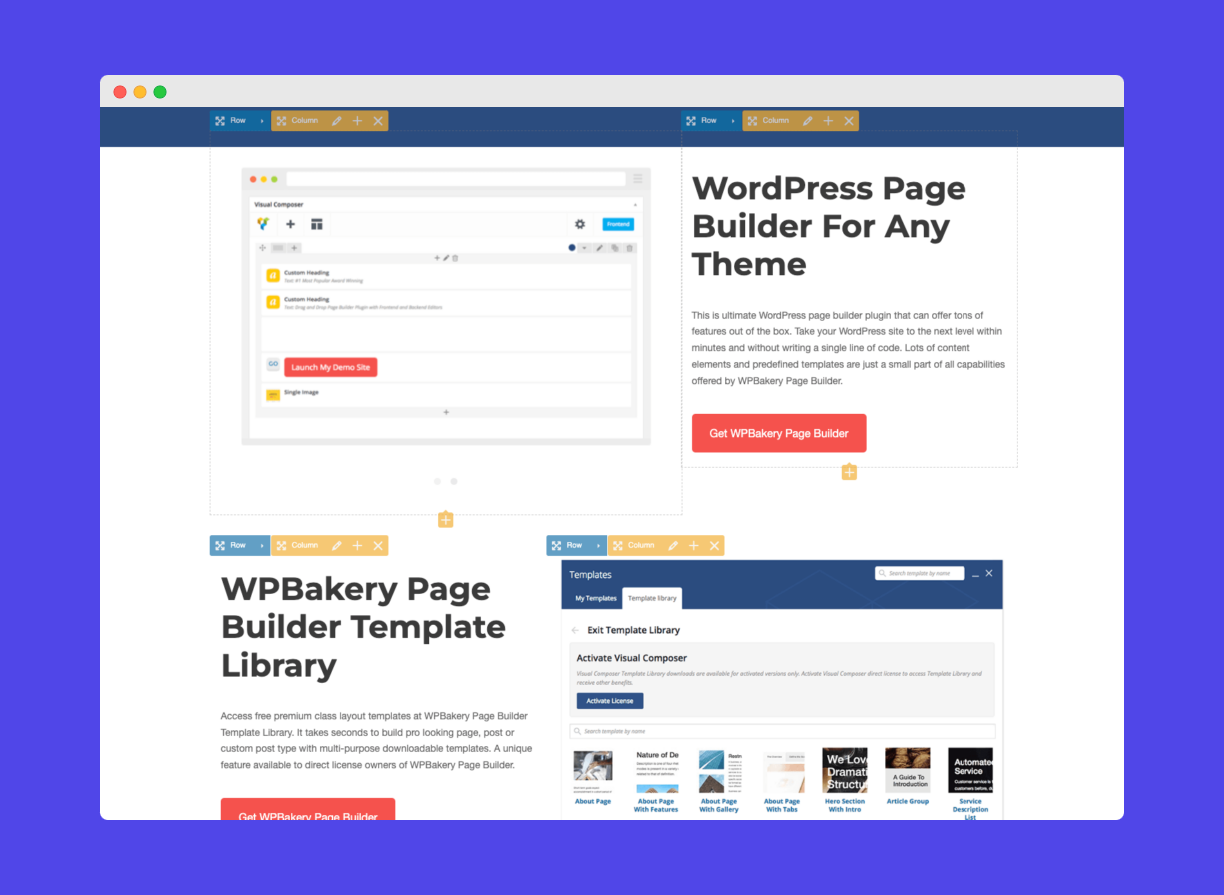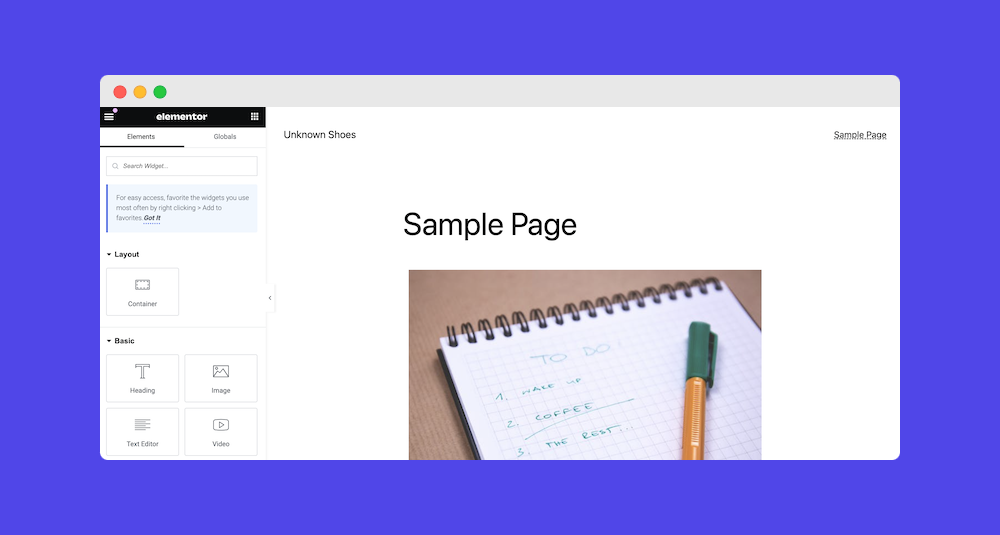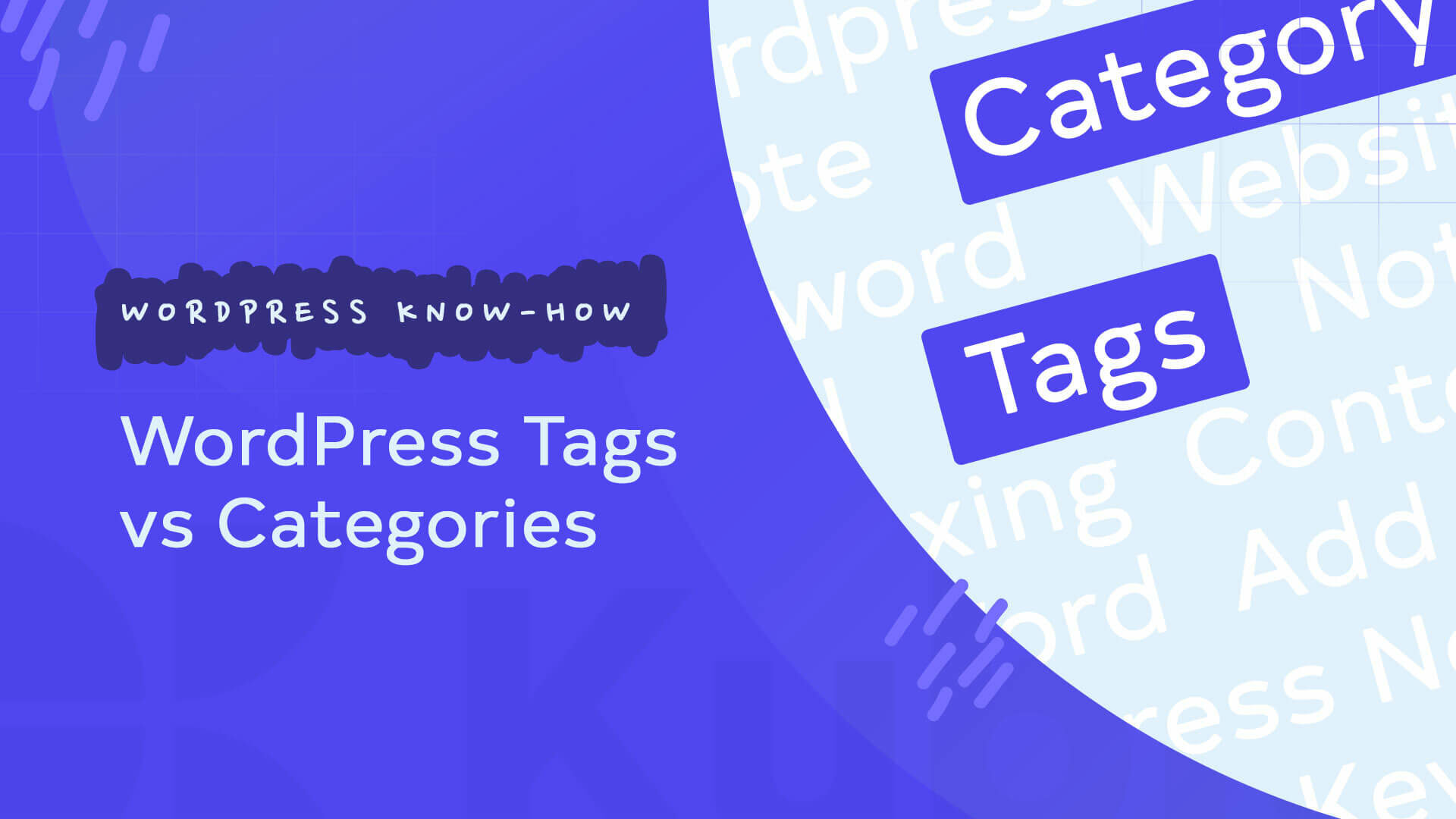Building a website that stands out for its aesthetics, functionality, and user experience is a complex task.
While WordPress sets a solid foundation with its array of themes and customization tools, it often leaves a lot to be desired for those needing greater control over their website’s design and functionality. With the number of WordPress plugins available, narrowing down your choices is extremely challenging.
Two plugins that typically stand out from the multitude of tools in the market due to their advanced features and enormous user bases are WPBakery and Elementor. However, selecting between these two promising competitors can be a conundrum for many.
To ease this decision-making process, we’ll delve into an in-depth comparison of WPBakery and Elementor. We’ll also go through their features, ease of use, pricing, and more to help identify which one aligns best with your needs.
To top it all off, we’ve included a detailed overview of the Kubio page builder – a forward-thinking, feature-rich platform that skillfully combines the strengths of both WPBakery and Elementor while introducing its own unique innovations.
What do you need in a page builder?
Designing an exceptional website isn’t simply about having a captivating idea – it also necessitates having the right set of tools. Although WordPress offers a basic platform called Gutenberg, it’s pretty basic and limited.
- Most pages created using only the Gutenberg editor end up looking very similar, making your website virtually indistinguishable from numerous others on the Internet.
- If you’re looking to create a truly unique website, you’ll need coding expertise.
- Default WordPress themes don’t offer many features, and you’ll have to buy custom ones, which can be expensive and restrictive.
This is where page builders shine – they significantly expand the array of customization options that are lacking in the base platform of WordPress. Popular page builders like Kubio, WPBakery, and Elementor usher web design into an easily accessible space, even for those without intricate programming know-how.
They often come loaded with meticulously designed themes, setting a great foundation for kickstarting your website, no matter if it’s a simple blog or a WooCommerce store. Additionally, for those versed in managing CSS elements, these page builders simplify working in custom code to create distinct features.
That being said, not all page builders are created equal. Let’s see how they stack up against each other.
WPBakery and Elementor: Similarities
Diving deeper into the WPBakery and Elementor comparison, let’s take a look at what they both have in common:
- No coding required: Both WPBakery and Elementor are designed so that you can use them regardless of your knowledge of programming. These platforms make website building possible for everyone.
- Drag-and-drop system: They both boast an easy-to-use drag-and-drop editor that simplifies the whole process of website building.
- Multiple templates: Both site builders offer hundreds of templates that help you begin your website design journey, reducing the time needed to build a website from scratch.
- Support system: Whether you seek assistance or some inspiration, both WPBakery and Elementor flaunt sturdy support systems, complemented by an abundance of documentation from the community.
While these shared features make WPBakery and Elementor compelling enough, what will ultimately guide your decision to select the perfect fit for your website are the unique differences between them.
Features breakdown: WPBakery and Elementor
As WPBakery and Elementor both boast superior performance among WordPress builder options, you can form your choice based on the following key considerations.
- Level of expertise: A beginner would benefit from a plugin that is user-friendly and generally not hard to figure out. You’ll also need a responsive customer service team that can help you in areas where you’re having trouble. On the other hand, a seasoned professional in building websites would require a more complex system that gives them enough flexibility to be creative and customize.
- Preferred workflow: Think about whether you prefer all functionalities within one interface or if you enjoy switching tasks when inspiration strikes, as these are factors that can impact your choice. Moreover, when thinking about long-term goals such as SEO and page migration, it’s smart to choose a future-ready tool that can meet your evolving needs.
- Budget: To decide how much you can invest in your page builder, look at overall costs and see what you can afford without risking key operations. Remember, striking a balance between price and performance is crucial. This ensures that you don’t sacrifice essential functionality for the sake of cost savings.
In the following sections, we’ll dive into a detailed comparison of WPBakery and Elementor, focusing on these factors.
Experience level: A comparative analysis
Both WPBakery and Elementor promote themselves as being beginner-friendly. However, if you delve deeper, you’ll see the user experience they provide differs significantly.
WP Bakery
Although WPBakery offers a wide range of functionalities, it’s not primarily designed with beginner users in mind. Its split interface between a back-end editor and a front-end simulator, which divides functions among various screens, may confuse beginners due to its complex arrangement. Additionally, image and text blocks have a separate editor.

Coupled with its steep learning curve, the WPBakery Page Builder can potentially make the initial stages of website building more of a difficult task.
Even though WPBakery’s multitude of features promises versatility, it is presented in a manner that may seem confusing to a newcomer. Additionally, while WPBakery doesn’t strictly require coding skills for operation, familiarizing yourself with some HTML and CSS basics might be necessary to leverage it fully.
Elementor
Contrasting this, Elementor emerges as an approachable choice for newcomers to website building. With all functionalities neatly packaged within a single interface, it provides a streamlined and intuitive user experience.

For those venturing into website building for the first time, Elementor stands out as a more appealing choice, with its smart design, ease of use, and quick learning curve. However, if you do want to use code on your site, Elementor may not fully meet your needs.
WPBakery may be a better fit for seasoned developers who desire a seamless blend of non-coding and coding functionalities, since it allows site creators to combine both drag-and-drop web design and shortcode.
Exploring interface and functionality differences
When it comes to user interfaces and functionality, both WPBakery and Elementor have distinct approaches.
WPBakery
- Two interfaces: The design process splits into a back-end drag-and-drop interface dedicated to crafting your page layout, and a front-end simulator for inspecting how things will appear along with fine-tuning details like images.
- Over 50 native widgets: Provides roughly 50 native widgets along with hundreds of add-on options.
- No option to employ clean code: If you transition to a different page builder in the future, you might have to deal with a lot of residual shortcodes embedded throughout your site that could cause functionality problems and hinder SEO performance.
- No live previews: The front-end simulator falls short by not offering a live preview of your site, indicating that you need to publish your site to witness its true appearance. This practice might cause a setback in user experience as there’s a risk of your site going live without achieving the ideal look and feel.
Elementor
- Single design interface: Leveraging its drag-and-drop mechanism, you can manipulate layout elements and modify elements like images and text, precluding the need to switch between pages.
- Widgets: The basic free version of Elementor equips you with nearly 30 widgets, while the feature-rich premium version offers an impressive bundle of nearly 100 widgets.
- Clean code: This means that it enables a safer and more scalable foundation for any potential site modifications, expansions, or platform transitions in the future.
- Live preview feature: It aids in the accurate visualization of your site as you design it.
Keep in mind, however, that if you stop using Elementor, your design elements may vanish, but the structural skeleton of your site will persist and continue to operate.
Pricing Models: Comparing WPBakery and Elementor
Considering the financial aspect of using these two page builders, their pricing models are notably different.
WPBakery
Lacking a free version, WPBakery insists on an investment right from the start. However, it offers a lifetime license, which is a unique advantage within the plugin landscape. Pairing this lifetime license with the pricing tiers provides flexibility to cater to various requirements:
- Single site – $59
- Five sites – $256
- Ten sites – $499
Elementor
Elementor, in contrast, offers a free version of the plugin, allowing users to try out basic functions. This could suffice for minimalist or early-stage sites. Elementor Pro Builder offers a yearly license instead of a lifetime one.
- Single site – $59/year
- Advanced single site – $99/year
- Up to 25 sites – $199/year
- Up to 1000 sites – $399/year
Prior to deciding which pricing model suits your situation, thoroughly evaluate your site’s strategy, goals, and potential for growth. Aligning your plugin choice with your overall trajectory can save you from future headaches.
Summary: Elementor vs WPBakery pros and cons
Looking for a quick review of these tools pros and cons? Here’s a short summary:
WPBakery
- Pros:
- Many users who like WPBakery are loyal and have been with it for a long time.
- It’s highly compatible with certain themes, especially older ones built specifically for the tool.
- The paid version offers lifetime updates, making it cost-effective in the long run.
- It offers a wide range of content elements for page building.
- Cons:
- Some users consider it outdated compared to more modern builders.
- It can have a negative impact on site speed and performance.
- It creates a complex Document Object Model (DOM) structure, even for simple elements.
- Older versions have been flagged as security risks.
- Some reviews report that the interface is less intuitive than Elementor.
Elementor
- Pros:
- Intuitive and beginner-friendly, especially for non-coders.
- Time efficient, allowing for quick page creation.
- Provides many widgets, elements, and design options out of the box.
- Supports dynamic content and custom field integration.
- Cons:
- Can impact performance if not optimized properly – may require additional site caching to compensate.
- Hard to switch away from Elementor due to its content structure.
- Very popular plugin makes it a prime target for hackers, and it has been linked to vulnerabilities in the past.
- Advanced users often find it’s restrictive for complex, custom designs.
- While basic use is easy, mastering all features can take time.
Want to find out how Elementor stacks up against other site builders like Visual Composer? Read our guide: Elementor vs Visual Composer
Introducing Kubio: A superior alternative
If you’re evaluating or looking for an alternative to Elementor or WPBakery for your website needs, you should also consider Kubio, a fantastic tool for newbies and skilled developers alike. It comes with a comprehensive set of features designed to create gorgeous websites with ease.
Kubio simplifies the complex task of web design, making it not only manageable but also enjoyable. With Kubio, you can manage every page of your website through a user-friendly, unified interface.
Suppose you’re overwhelmed by the design possibilities, exhausted by the meer thought of trying to make a thousand little decisions. In that case, you can use the Kubio AI tool to instantly generate a bespoke first draft of your website – including images, landing page copy, and layout. All you have to do is input a few basic details about your site, and you’ll be instantly editing a template custom-built just for you.
Moreover, Kubio provides you with dozens of starter sites and page templates, along with over 340 professionally designed sections that effortlessly blend aesthetics and functionality. You can also optimize your site for different devices within the app itself, courtesy of simulated tablet and smartphone modes.

Customizing your site with Kubio
Kubio provides a one-stop, neatly organized interface, ensuring that you always have easy access to necessary widgets.

Kubio prides itself on its high level of customization, supplying you with an extensive set of tools you can use to make your vision a reality. With Kubio, you can design a site that stands out from the crowd and reflects your brand’s tone.
The best part here is that you don’t need to design any of the elements by yourself. You can just choose one of the 340+ premade sections and customize them based on the template. These sections include FAQs, CTAs, counters, portfolios, testimonials, pricing pages, and many more.
And once you’re done with the design of your site, you can instantly check how it looks on mobile and tablet devices.
Kubio pricing
One of the compelling features of Kubio’s pricing model is its flexibility. With four available payment tiers, the pricing structure can be fine-tuned to accommodate your needs as an individual, freelancer, or agency.

With both yearly and lifetime options, you have the flexibility to make a longer-term investment in a site that you plan to maintain indefinitely. Alternatively, you can opt for a more temporary license for a website you may not need long term. Kubio’s pricing tiers also include priority support for all your sites during the licensed period.
Page builders compared: A handy table
| Page Builder | Kubio | WPBakery | Elementor |
| How it Works | Single interface drag-and-drop builder | Back-end drag-and-drop interface and a front-end simulator | Single interface drag-and-drop builder |
| Best Features | AI-Powered site design, blocks, and pre-designed sections make it easy to create useful, beautifully designed content | Option to use code if you have the know-how can open up site design possibilities. | A massive widget library that reduces your need for other plugins. |
| Key Potential Drawback | As a relatively new page builder, does not have as large a user base or as many community resources as older tools on the market. | Although popular with long-time users, new users often find the interface outdated. | Has a reputation for causing performance issues, especially if not optimized properly. |
| Price | Starting at $99 | Starting at $59 | Starting at $59 |
Take action: Choose Kubio for your WordPress site
While Elementor and WPBakery have emerged as leading page builder plugins in the WordPress arena, we believe that Kubio Web Builder stands out as a solid and flexible alternative.
Kubio delivers a powerful blend of features found in both WPBakery and Elementor while adding unique touches of its own. The ease of navigation, high-end functionality, beautiful pre-made templates, and a suite of customization options make Kubio an exceptional choice for website builders of all experience levels.
And it’s not just the platform that’s flexible. Kubio offers a range of pricing plans, allowing you to align your tool with your budget and strategic requirements.
If you’re curious to see what Kubio can do, we invite you to explore the interactive demo site. Here, you’ll find a real-world environment in which to test and understand Kubio.
As you experiment, you’ll discover not only the high degree of user-friendliness that makes Kubio so easy to use, but also a range of tutorials and support resources that will fast-track your proficiency with the tool.If you’re ready to amplify your website-building experience, there’s no better time than now. Start with Kubio today – your dream website awaits!






